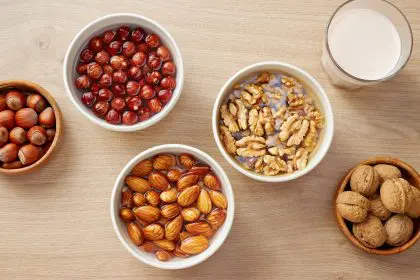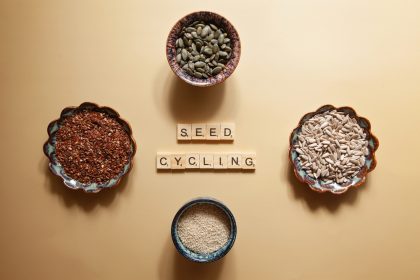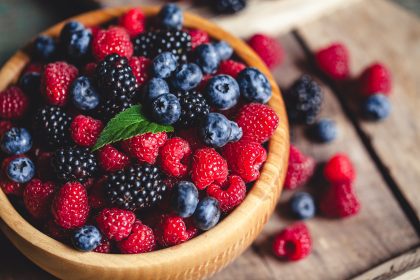Dietary fiber plays a vital role in overall health far beyond just aiding digestion. Despite its importance, many people fail to consume enough fiber daily, missing out on key health benefits. Research published in The Lancet highlights how adequate fiber intake reduces mortality risk and lowers the likelihood of developing chronic diseases. Yet, modern diets often fall short, leaving a critical gap in essential nutrition.
Understanding fiber and its role in the body
Fiber comes in two primary forms, each serving distinct functions in the body. Soluble fiber dissolves in water, forming a gel-like substance that slows digestion and helps regulate blood sugar and cholesterol levels. This type of fiber is found in foods like oats, beans, apples, and citrus fruits. Insoluble fiber does not break down in water, instead passing through the digestive system mostly intact. It adds bulk to stool, promoting regular bowel movements and preventing constipation. Foods rich in insoluble fiber include whole grains, nuts, and many vegetables.
Dietary guidelines suggest that adults consume between 25 and 31 grams of fiber per day, depending on calorie intake. However, most people fall significantly short of this recommendation, averaging less than 20 grams daily. This fiber deficit contributes to a range of health concerns, from digestive issues to increased risks of heart disease and diabetes.
The health benefits of a high-fiber diet
A fiber-rich diet offers a host of benefits that extend beyond digestion. Studies indicate that individuals consuming higher amounts of fiber have a 15 to 30 percent lower risk of premature death. Fiber also supports cardiovascular health by helping to lower LDL cholesterol, reducing inflammation, and improving blood pressure regulation.
Weight management is another significant advantage. High-fiber foods increase satiety, making people feel full for longer periods, which naturally leads to reduced calorie intake. In addition, fiber promotes healthy gut bacteria, which plays a crucial role in metabolism and immune function.
For individuals managing diabetes or at risk of developing the condition, fiber can help control blood sugar levels by slowing glucose absorption into the bloodstream. This reduces insulin spikes and provides a more stable energy supply throughout the day.
Best sources of dietary fiber
Incorporating more fiber into a diet begins with choosing the right foods. Fruits, vegetables, legumes, seeds, and whole grains are some of the richest sources of fiber, with some options offering significantly higher amounts per serving.
Fruits such as passionfruit, avocados, guavas, raspberries, and blackberries provide substantial fiber content while delivering essential vitamins and antioxidants. Legumes like navy beans, kidney beans, lentils, and split peas are among the most fiber-dense foods, making them excellent additions to meals.
Seeds and whole grains also contribute to fiber intake. Chia seeds, flaxseeds, and oatmeal are particularly beneficial, offering a combination of soluble and insoluble fiber. Whole wheat products, brown rice, and quinoa further support a fiber-rich diet.
How to increase fiber intake effectively
Gradually increasing fiber intake allows the digestive system to adjust and prevents discomfort such as bloating or gas. An easy way to begin is by starting the day with a fiber-rich breakfast. Whole grain cereals, oatmeal, or smoothies blended with fiber-packed fruits and seeds can set a strong nutritional foundation.
Incorporating more legumes into meals provides another effective strategy. Adding lentils to soups, beans to salads, or chickpeas to stir-fries increases fiber intake while enhancing overall nutrient balance. Choosing whole grains instead of refined options further contributes to better digestion and overall health.
Snacking wisely also helps boost fiber consumption. Replacing processed snacks with nuts, raw vegetables, or fresh fruits ensures a steady intake throughout the day. Hydration plays a key role in fiber digestion, as fiber absorbs water to support smooth digestion. Drinking sufficient fluids alongside fiber-rich foods helps prevent discomfort and allows fiber to perform its functions effectively.
Making fiber a lasting part of your diet
Sustaining a high-fiber diet requires consistency and mindful food choices. Meal planning that includes a variety of fiber sources helps maintain balance and ensures long-term adherence. Regular consumption of fiber-rich foods, combined with proper hydration and physical activity, contributes to overall well-being.
By making small yet meaningful adjustments to daily eating habits, it becomes easier to meet fiber recommendations and reap the associated health benefits. Over time, these changes lead to improved digestion, better heart health, weight management, and a reduced risk of chronic disease.
Despite its proven advantages, fiber often remains overlooked in modern diets. Recognizing its role as more than just a digestive aid can inspire healthier choices and promote long-term wellness.















